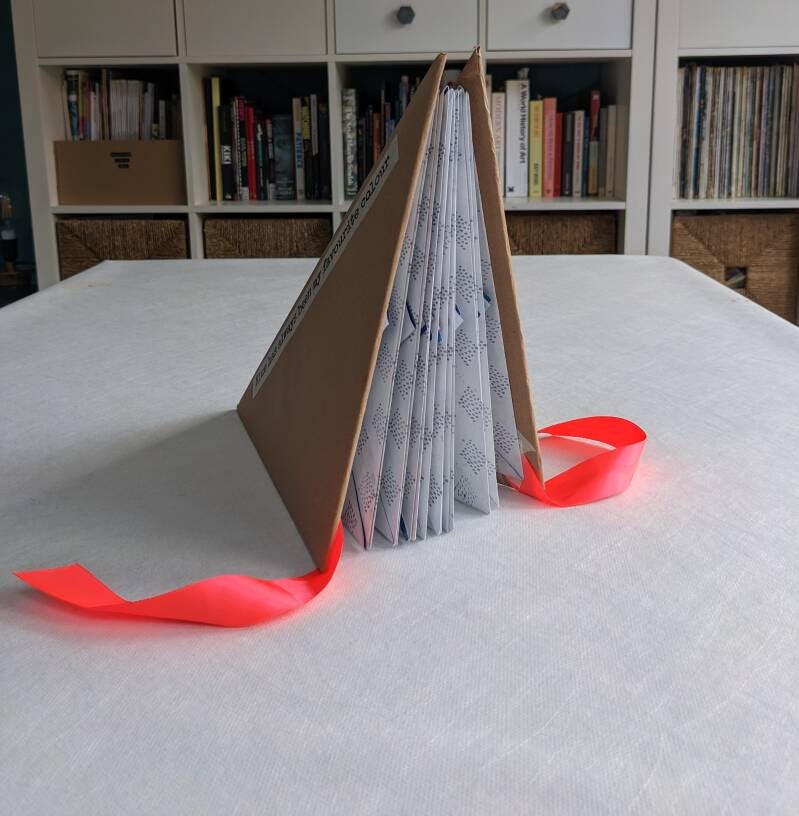Blue has always been my favourite colour

This book forms a triangle shape after each sheet is folded in a way reminiscent of the fortune tellers I used to make back in school. Once stuck together and given hard covers the pages of the book can be turned, the flaps can be opened and the whole thing can be opened up to become a more sculptural form.
I was keen to experiment further with cyanotype and wanted to try developing photographs. Having no experience in this area I did a little research and found the process was fairly simple, I would be able to do it all from my 'kitchen table studio'.
I wanted to include something in my (49 years is) Seven Times Seven project to show myself aging. I'm not a huge fan of photos of myself but transforming the images into the blue of cyanotype and then folding them up takes away from the personal element somewhat and feels OK.
I hunted through old photos stored in the loft and my digital archives finding pictures that (roughly) showed me at 7, 14, 21, 28, 35. 42 and 49. I made sure to include my three children in the images as felt that to be an important aspect of my identity. The old analogue photos were scanned so I had digital versions. I then changed each image to greyscale before inverting the colours to make a negative. Although my research told me I should do this in Photoshop I was able to find a free online tool. The negatives then need to be printed onto acetates. You could do this at home but I prefer to use my local print shop as the results are always so much better. I printed these out enlarged to A4. I find the negatives really interesting in themselves and had a lesson from my partner on why the scanned images from old photos work so much better than the digital photos when I had assumed it would be the other way round – pixels and colour values and stuff (think I understand but not sure I could explain it to anybody else!)







I'd only used cyanotype once before and that had been on a gloriously sunny midsummer day with exposure times of around 2 - 3 minutes. This time the weather was grey, damp and horrible but being an impatient type I set things up by the glass doors at the back of the house and thought it was worth a go.
I wasn’t patient enough with the first exposure and although it did something there was a lot of detail missing from the print. So I set up and tried again, adding some extra bits around the edges (which would become the flaps of the triangle book pages) I found leaving it for 90 minutes worked. Hooray! I was shocked at how much detail could be seen from such a simple process.
I've since seen multi-coloured cyanotypes using botanicals to produce the yellow and magenta tones. I can't quite get my head around how these work but definitely something to try in the future.
I folded this set of prints up into a triangle book using folds that are similar to the fortune tellers I used to make as a child. The corners can be folded out to see what is underneath. If I was developing this piece I would work on making sure the images showed something of interest when opened – maybe extra objects, part of the photo or text.
Once the cardboard covers were added a sculptural element was added as the book can stand part and fully open creating different forms.


I followed the instructions in this video to make my first triangle book. I then adapted it to make it bigger for this project. They are one of the easier folds so a good starting point for making artists' books.


Add comment
Comments